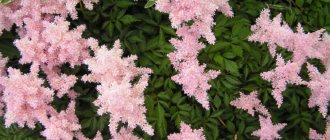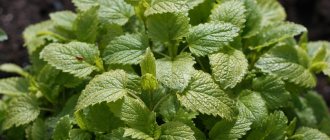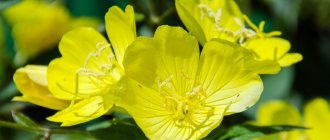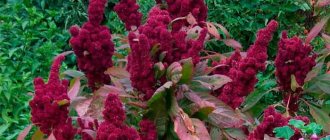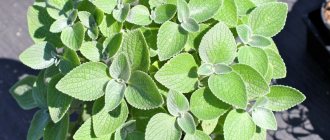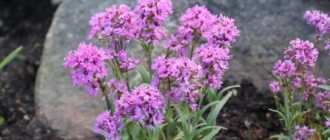Loading…
Loading…
An ancient Greek legend says that mint is the beautiful nymph Minta transformed into a plant. The goddess Persephone, having learned that her husband Hades liked the young beauty, cast a spell on the nymph. Since then, mint has appeared in Crete and other parts of the Mediterranean.
Where does mint grow today? Unfortunately, this is just a beautiful fairy tale, otherwise there would be such a variety of fragrant, spicy-aromatic and even medicinal plants in the world, united under the common name - mint. Today, more than 25 species have been discovered belonging to the Yamnotaceae family, which have some common features, but also have important differences. What is mint like that grows in different parts of the world?
If we make a general description for most species, then mint is a herbaceous plant with straight or lodging stems, depending on the species, from 20 to 150 centimeters in length. Mint has oval, ovate or elongated leaves about 4–8 cm long, often, like the stems, pubescent. In addition, mint is distinguished by a special flower shape, which gives the whole family its second name - Lamiaceae.
Of the total number of existing species, no more than a third are actively cultivated, but fragrant and even ornamental plants, which are its very distant relatives, are sometimes classified as mint.
Meadow mint
The most famous in Russia is meadow mint or Mentha arvensis.
This species can be seen as a wild plant in European countries and almost everywhere in our country from its western borders to the Far East. This species is also called noble mint or Lapland mint. The oil obtained from the culture contains from 60 to 92% menthol. Despite this, the taste of meadow mint is mild, which allows the leaves and tops of shoots to be used for culinary and medicinal purposes. The stems of this perennial species grow up to 80 cm in height. The rhizomes, like those of related plants, are creeping and powerful. The flowers are pinkish or lilac in color, small, collected on false whorls located along the stem. The flowering time of meadow mint begins in June and ends only in October.
Garden mint: photo and description of the species
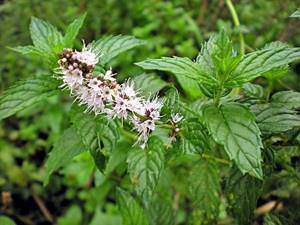
Garden mint or Mentha spicata is a perennial herbaceous plant that does not have such a bright taste as peppermint, but has no equal in its popularity in European plantings. The species can be found growing wild in the southwest and south of Russia, where mint grows in moist, shaded places.
This variety of mint has an annual tetrahedral stem, reaching a length of about a meter, on which there are oblong-ovate leaves with pointed tips. As you can see in the photo of garden mint, the upper part of the leaf is completely smooth; there are tiny hairs only in the veins on the back side. The height of the plant does not exceed 45 cm, but the width of the bush grows up to 90 cm. Small purple flowers of mint, as in the photo, appear in July and fade only at the end of summer.
For culinary purposes, dry and fresh mint leaves with a pronounced aroma and a direct, slightly pungent taste are used.
Curly mint
Spearmint, curly mint or Mentha spicata crispa is a variety of mint with a specific foliage shape. Although this attractive plant was found in the wild only in certain areas of Asia, southern Europe and northern Africa, mint quickly moved to regions with temperate climates and is cultivated not only in European countries and Russia, but also on the North American continent.
The height of the perennial plant is from 30 to 100 cm, the stems are powerful, erect, planted with compressed, serrated along the edges, bright green leaves. The flowers of curly mint differ little from the flowers of related species; they are pale pink or white in color and are collected in whorled inflorescences.
mint plant
Mint (lat. Méntha) is the collective name of plants of the genus Lamiaceae. Included in the group of spicy, aromatic and medicinal plants. Mint is a herbaceous, perennial plant, its straight, dark green stems are from 30 to 120 centimeters high, depending on the type. The leaves are elongated oval in shape, the upper part of the leaf is dark green, the back is light green. The length of the leaf of the plant is about 6 centimeters, width up to 2 centimeters. The leaves of the plant produce the largest amount of aromatic essential oils; the glands are located on both sides of the leaf. Mint blooms in central Russia in August - September with small purple flowers. Flowers are collected in inflorescences and located at the top of the shoots of the plant. Mint fruits are brown peas, about 1 centimeter in diameter, and are rarely formed. The root system is developed, the horizontal branched rhizome is located in the top layer of soil. Lateral shoots extend from it, spreading near the surface of the soil. Mint reproduces by root shoots. In total there are more than 25 plant species. Most are not cultivated. Cultivated varieties of mint - 5-7 species are grown to produce spice, essential oil, menthol, and for medicinal purposes. The most commonly grown peppermint (Mentha piperita) and Japanese mint (Mentha japonica) are grown for use in cooking and the food industry. Mint is one of the most common spicy aromatic plants; it grows in many regions of the world; it is grown on an industrial scale in China, India, European countries, and Russia.
Moroccan mint
Moroccan mint or Mentha spicata crispa Moroccan is nothing more than curly mint. The special name is of French origin and dates back to the times when Morocco, among other North African provinces, was a colony of France. The spices, fruits and plants brought from this country seemed strange to Europeans.
Moroccan mint, grown in a hotter climate than in the Old World, contained more essential oils and menthol, and also had unusual corrugated leaves, which is why it deserved its name.
Apple mint
Mentha rotundifolia or round-leaved mint is called Egyptian, golden and confectionery mint. Often the interspecific hybrid between longleaf mint and sweet mint is called apple mint. Initially, the species comes from Asia Minor or North Africa.
And in the middle zone and in the south of Europe, in the countries of Transcaucasia and in Russia, where mint grows as a garden crop, the plant is valued for its pleasant, refreshing taste and mild aroma.
Not only young leaves, but also the entire green part of the plant are used for culinary purposes. In addition to the usual forms of apple mint with green foliage, today variegated varieties have been developed that combine decorativeness and spicy-taste qualities. Both varieties of apple mint form herbaceous bushes, 50 to 70 cm high, strewn with round or wide ovoid leaves characteristic of the species, on which thick pile is clearly visible.
Common types of mint
Only a person far from plant growing and all phytosecrets might think that all mint looks the same. But each variety has its own leaf shape, important biological features and a list of medicinal properties.
Pepper
One of the most recognizable species. This plant loves moisture very much, and “gives off” its pronounced menthol aroma. It is almost impossible to find peppermint in the wild, but you can often find it on the plots of summer residents and lovers of vegetable growing and gardening. This is the most cultivated type of mint.
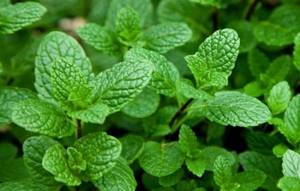
Peppermint
Peppermint begins to bloom at the end of June, and only in September does its flowering end. If you look at the photo of what peppermint looks like, you can find two varieties of the herb: black and white. It is easy to distinguish the species by the stems and leaves. Black mint has a distinctive red-brown stem and brown leaves. White mint has both stems and leaves of a relatively uniform green color.
It seems like everyone knows how to collect and dry peppermint. It is added to tea, which is considered an excellent sedative. It is added to salads and soups, and amazing zucchini pancakes are made with mint and cottage cheese. It is specially planted near the house so that the relaxing aroma circles nearby and creates the desired atmosphere of comfort and tranquility.
Interesting and useful: “This is incredible, find out how to increase hair growth using peppermint tincture”
Fragrant
This variety prefers sunny areas with high humidity, and residents of the Mediterranean most often consume this mint. Mint blooms for a long time, only at the beginning of frost the flowering ends. Its stems are pubescent, covered with round green leaves with a light border.
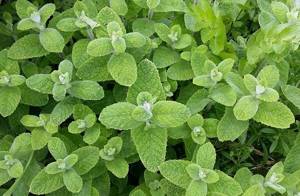
Sweet mint has the same purpose as peppermint - healing and cooking. It is used for colds, nervous disorders, insomnia and fatigue. Its benefits also manifest themselves during the off-season, when the body may react painfully to the change of seasons.
Apple
This hybrid plant is the “child” of longleaf mint and mint. The culture has rounded leaves, velvety to the touch with a noticeable whitish coating. It blooms in May, has small fruits, white or purple flowers. It is cultivated both as a garden plant and as an indoor flower.
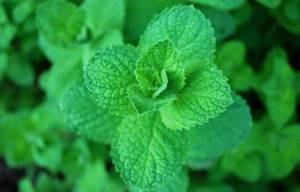
It is actively used for culinary purposes: it is an excellent ingredient for jellies, vegetable sauces, tea and even kvass. Apple mint is used in baking, giving desserts a zesty, refreshing taste - the best choice for the summer menu. The smell of this type is menthol, but with pronounced apple notes.
Menthol
This type is preferred by those who are afraid of pest attacks on the site. In terms of resisting them, menthol mint will have no equal. The plant can reach 65 cm in height, its stems are deep brown. And in this type of culture the maximum concentration of essential oils is 5.5%. That’s why menthol herb is used for refreshing tea, which is considered an excellent diuretic and an effective anti-inflammatory product.
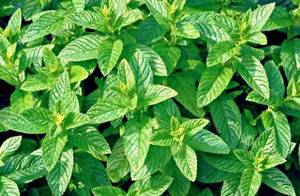
As for culinary use, the iconic Mojito cocktail is made with menthol mint leaves. True, it is not from the very beginning of summer that you can enjoy a cocktail or drink a cool cup of tea: this species blooms only in the second half of summer.
Curly
Another name is curly. Mint species are rich in shades of green and leaf shape, and curly mint is immediately noticeable with its differences. Its light green leaves curl. The aroma of the species is unobtrusive and delicate. That is, growing this species will interest those who love the lightness and delicacy of aromas.
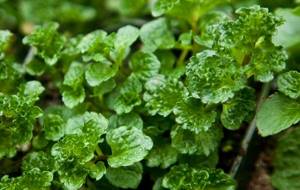
But the curly species can grow up to a meter. Does not require special care. The curly crop is perfect for making teas and storing dry herbal infusions. In winter, it will relax after hard days at work, and strengthen the immune system during the cold season.
Lofant anise
This herb is known and valued in Eastern medicine. Otherwise it is also called licorice mint. The leaves and flowers of the plant have the aroma of both mint and anise. The leaves of the species are often compared to nettles - they are indeed similar. Lofant grows in China, India, the Himalayas, eastern Russia and Tibet.
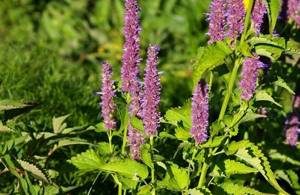
Fresh greens can be cut throughout the growing season; the plants are carefully tied into bunches and dried under a canopy.
And they need to be stored in jars, linen bags or just paper bags. You should definitely try the jam with lofant - its taste is unforgettable. Tea with this type is useful: it normalizes metabolic processes and even stabilizes blood pressure. People who are recovering from surgery or after childbirth drink drinks with lofant. This mint also helps those who want to radically solve the problem of chronic fatigue .
Lemon Balm
It’s easy to guess what flavor lemon balm has. And the leaves of the plant smell of honey - many people associate a warm and pleasant smell with rural childhood. Interestingly, lemon balm is the same lemon balm, honey balm or honey slipper.
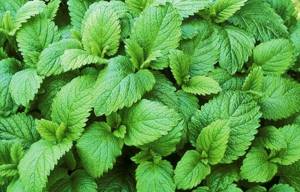
You need to have time to enjoy the taste and aroma of the species; it blooms only from July to August. As soon as it blooms, the grass “takes away” its aroma. Lemon balm is actively used in perfumery, and in cooking, of course. It is especially good in summer salads, vegetable pies, and homemade lemonades. And if you pour this mint into a linen bag and place it on the nightstand next to the bed, your sleep will be easy and restful.
Plectoranthus
Otherwise called indoor mint and spur flower. A popular plant for growing at home, as the essential oils in mint create a pleasant, refreshing aroma throughout the house. When mint blooms, the buds need to be torn off: alas, but with them it looks sloppy. For indoor plants this is an important criterion.
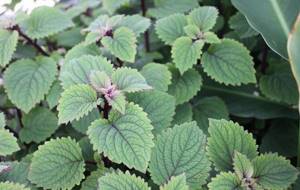
It is believed that this plant attracts financial well-being to the family and inspires determination and achievement of one’s goals.
It is used both in cooking and in folk medicine. It is prohibited for pregnant women and hypotensive patients to use it.
Sweet mint
Common in the Mediterranean and the countries of Asia Minor, as well as in a number of European countries, fragrant mint or Mentha suaveolens is a perennial fragrant plant that is used in cooking and medicine. In the wild, the plant prefers sunny, but not dry, edges.
In countries where this type of mint grows, it reaches a height of 30 to 100 cm. The stems are erect, pubescent, covered with heart-shaped, medium-sized green leaves. The leaf blades are compressed, with small teeth along the edges. Fragrant mint blooms, forming cone-shaped dense inflorescences consisting of small white flowers.
Tea with mint
Peppermint leaves can be used to make a wonderful soothing tea. One writer called this tea one of the best natural tonics. Peppermint is used in cooking and confectionery.
Since ancient times, various types of mint have been used medicinally. And now they occupy an important place in trade. Peppermint and spearmint are added to a huge number of products, from chewing gum to toothpastes.
Often, mint chooses sunny places with moist and moderately enriched soils as its habitat; sometimes mint can also grow in shade or partial shade. These plants reproduce underground using stems or shoots.
Japanese mint: description of the species and photo
Little known to Europeans and shown in the photo, Japanese mint or Mentha japonica is a perennial plant found only on two islands of the Japanese archipelago, Hokkaido and Honshu.
The places where Japanese mint grows are mostly swampy or humid forests. The height of the plant, rare even for the Land of the Rising Sun, does not exceed 40 cm, the stems are erect or creeping, the leaves are small, barely reaching 2 cm in length. Small flowers of a white or pale lilac hue are collected in sparse inflorescences. The time for Japanese mint to bloom, in the photo, begins in August and continues until mid-autumn.
Like other species of the family, the plant contains essential oils and is used for the manufacture of cosmetics, and is also used as a spicy-flavoring seasoning.
Japanese mint essential oil – Mentha arvensis
Published: 10/11/2014
Author: O.Shar
Categories: Directory,Essential oil
Print this article
Buy Japanese mint essential oil. Japanese mint natural essential oil. Quality of Japanese mint essential oil. Description of Peppermint oil. Use of Mint in Aromatherapy. Treatment with Japanese Mint. Mint for problems of the musculoskeletal system. Mint for pain relief.
Area of effect of mint essential oil:
- Tracheitis, tuberculosis, colds, pulmonary infections, runny nose, congestive cough, sinusitis, laryngitis.
- High temperature, fever, reduced immunity.
- Hypertension, asthenic syndrome, ischemia, angina pectoris (heart rhythm disturbance), tremor.
- Arthrosis, arthritis, osteochondrosis, rheumatism, neuralgia, varicose veins.
- Nausea, heaviness in the stomach, heartburn, indigestion, gastroenteritis, flatulence, impaired intestinal motility (constipation), helminths.
- Gallstones, swelling.
- Menstrual pain, menstrual irregularities.
- Stomatitis, gingivitis, toothache, unpleasant oral odor.
- Heatstroke, sunburn, frostbite.
- Deodorant.
Botanical name: Mentha arvensis
Family : Lamiaceae (Laaminaceae) or Lamiaceae (Labiateae).
Other name: Field mint.
Homeland of growth: Japanese islands: Hokkaido and Honshu.
Country of cultivation: Europe, China, Brazil, Vietnam, Argentina, Brazil.
Raw materials for obtaining oil: aerial part of the plant: flowers, stems, leaves.
Production method: steam distillation. Color: pale yellow pigment.
Taste: pungent, bitter.
Aroma: menthol, bright, but weaker than the aroma of Peppermint.
Consistency: liquid, light, flowing.
Energy: cold, damp.
Note: top.
Class: adaptogen, stimulant, aphrodisiac for men.
Commercial value: average.
Description: Japanese Mint essential oil is produced from a plant that grows mainly in the swampy parts of the Japanese islands. In Japan it is considered a rare plant. Japanese mint has a height of 20 cm to 60 cm. The stem is erect, thin, rather weak. The root system is extensive. Oval leaves 1-2 cm, with sparse, slightly pronounced teeth along the edges. Japanese Mint blooms with flowers of various colors, which are collected in bunches and form a bright spherical bouquet on the stem between the leaves. The flowers are pale pink, violet and lilac. The flowers are small, bell-shaped, with four long stamens inside. Fruit-seeds are 0.8 mm long. The entire plant is covered with fine fluff.
Interestingly, more than 25 species of mint are known, and only a few of them are grown for their essential oil and for the production of menthol.
And yet, at room temperature the plant becomes very hard. This is due to the high menthol content in it.
From the history of the plant: Mint received its name thanks to an ancient myth about the patroness of meadows and forests, a nymph named Minta. The god Pluto sought the girl’s love. Pluto's jealous wife, Persephone, trampled Minta into the ground in a fit of rage. Pluto turned the nymph into a fragrant plant - Mint - “menthe”.
The cultivation of Japanese Mint on an industrial scale for the purpose of obtaining essential oil began in 1906. By 1935, Mint plantations began to occupy more than 22,000 hectares. Several hundred tons were produced and sold per year. Japan was the largest supplier of Menthol, which was sent to the pharmaceutical industry. The Second World War was the reason why the production of Peppermint suffered a severe decline and, as a result, ceased altogether. Soon Mint began to be purchased in Brazil. Currently, the largest supplier is China. Sales of menthol reached several thousand tons per year.
Main components: menthol (70-95%), menthone (10-20%), pinene, methyl acetate, isomenthone, thujone, phellandrene, etc.
Properties : anesthetic, antiseptic, analgesic, diaphoretic, anti-inflammatory, antipyretic, carminative, stimulant, choleretic, lactostopping, restorative, anthelmintic, cardiotonic, vasoconstrictor, contracting, antispasmic, improves blood circulation
Effects on: skin, nervous and food systems, circulatory system, bone marrow
Application.
General Therapy: Japanese Mint essential oil is known in Aromatherapy as a strong analgesic. It is used to eliminate headaches, ear and toothaches, as well as for neuralgia and rheumatic pain.
Japanese mint wonderfully restores the respiratory system. Gargling helps with sore throat and laryngitis. With the help of inhalations, you can stop a runny nose and cough (expectorant property), and cure sinusitis. Essential oil has a diaphoretic and diuretic effect. It is an excellent remedy for lowering body temperature and relieving chills (fever).
Mint is used for the digestive system against gastritis, indigestion, alcohol and food poisoning. Mint eliminates nausea, cramps and stomach pain. Relieves attacks of hiccups, flatulence, facilitates the processes of digestion and absorption of food. An excellent remedy for seasickness. For diarrhea, it eliminates pain and cramps. Used for spastic constipation and ulcerative colitis. Peppermint oil is an excellent prevention against the formation of gallstones. Can dissolve and remove small formations. Removes heavy metals from the body.
Japanese Mint, like Peppermint, is an effective adaptogen. It is used for loss of strength and weather sensitivity. Mint significantly improves immunity and increases the body's resistance to low doses of radiation.
Peppermint can be used to regulate heart function. It will calm your heartbeat and improve blood circulation.
Peppermint oil is used for obesity and excess weight. It has a positive effect on lipid metabolism: it reduces cholesterol levels. Promotes proper metabolism. Allows you to burn extra calories.
For women, peppermint oil is useful because it regulates the menstrual cycle, relieves pain during menstruation, eliminates irritability and general lethargy. Helps reduce lactation in nursing women.
Psycho-emotional sphere : Japanese Mint essential oil is an aromatic adaptogen. It activates brain activity, improves memory and the ability to absorb new information. Helps prevent senile sclerosis. Restores physical and emotional strength. Adapts to any life situation. Eliminates the effects of shock, relieves tension. Extinguishes negative emotions, anger, aggression, indignation. Improves mutual understanding between people. Many people believe that Peppermint is a remedy for insomnia, so here it is! This is wrong. It is better not to use it at night. However, regular use of Japanese Mint will help normalize sleep.
In cosmetology : Japanese Mint essential oil is widely used in cosmetology and dermatology, due to its refreshing and rejuvenating properties. It is suitable for caring for fading, aging skin. Mint tones it up, rejuvenates it, relieves irritation, and tightens pores. Refreshes and improves complexion. Too much dosage may cause blood flow and redness.
In dermatology: Peppermint oil is used for acne, eczema, allergic itching, and lichen. Eliminates capillary patterns and rosacea.
Hair: Japanese mint oil stimulates blood supply to the hair roots.
Body: Mint is used to contour the body. It has excellent weight loss results. Mint eliminates unpleasant body odor and bad breath.
Erotic effect: Mild Aphrodisiac. More suitable for men. In Ancient Greece, soldiers were forbidden to use mint, so that nothing could distract them from military tasks. This plant is included in the recipes of many love love drinks. It gives masculine strength, energy, excites and promotes ardent passion. At the same time, Peppermint clears the mind and forces one to be guided by a feeling of reason, and not by a frivolous decision of a clouded consciousness. This scent allows a man to do masculine things. Helps you take and bear responsibility for your relationship with a woman.
Household use: Peppermint oil is not tolerated by domestic insects and parasites.
In the heat of summer, a bath with this aroma will cool and refresh. It can be used in the manufacture of deodorants.
The oil can be taken on trips and trips on water; it will help to overcome seasickness and reduce weather dependence.
A drop of essential oil can be added to the cake cream. It will give the confectionery a pleasant aroma.
A scent for the office, school classroom, study.
Mint can be used as a stain remover. It is enough to drop 1-2 drops onto the stain and wash it under running water.
Role in perfume composition : The aroma of Japanese Mint differs from the aroma of Peppermint. Its smell is not as bright and less sweet. Many people like her better. Japanese mint has a top note. The degree of volatility is high. This scent definitely needs a hold. Mint will add freshness and purity of vibration to any composition. The aroma is very rich and dominant. Therefore, it should be present in mixtures in small quantities.
The magic of aroma: The aroma of Mint is cleansing and strong. Mint is the patron saint of diplomats, alchemists, travelers and merchants. Mint was woven into wreaths during religious ceremonies. It was placed on the sacrificial altar and burned in temples. Mint gives prosperity and love. It has the unique magical power of renewing and protecting the human energy shell. Eliminates negative influences from outside and reveals a good and kind beginning. Mint protects against attacks on one's own freedom. Reveals abilities and new talents in a person. The aroma of Mint has a lively good energy. Gives peace and tranquility. Influences the subconscious and gives magical powers. She can attract success and wealth to you.
Element: Air, Fire
Planet: Mercury
Suitable for Zodiac Signs: Suitable for men of all zodiac signs, especially Capricorn, Taurus, Gemini, Leo and Aries.
Compatibility: cedar, cypress, pine, lavender, marjoram, rosemary, eucalyptus, ylang-ylang, geranium, lavender, rosewood, neroli, fennel, red thyme, basil, citrus oils, etc.
Compliments: ylang-ylang, geranium, lavender, citrus
Contraindications and precautions.
Do not use together with a course of homeopathy.
Do not apply to children under 6 years of age.
Do not use for bronchospasms and vasomotor rhinitis.
Do not use large doses at night as it may cause insomnia.
In nursing women, it may reduce lactation. Pregnant women use in very small doses.
A contraindication may be individual intolerance to the aroma. Before use, you must do a test.
Storage: Store in a dark glass bottle, tightly closed, at room temperature. Keep away from children. Shelf life 2-3 years
Methods of application>>>
Recipes with Peppermint essential oil:
Obesity
Inhalations: Drop 2 drops of Peppermint essential oil into the aroma pendant. It will significantly reduce appetite and promote digestion .
Herpes
Application. Apply Peppermint essential oil to the herpes rash using a cotton swab.
Headache
Cold compress on the head. Dilute 1-2 drops of essential oil in cool water. Dampen a napkin, wring it out and place it on your forehead. Take a lying position.
Acupressure. Dilute the Mint in fatty oil and use your fingers to massage points in the area on the temples, above the eyebrows, and behind the earlobes using light pressure.
Tired legs (sweating), general fatigue
Bath or general bath with Peppermint oil. Dilute 8 drops of Mint based on an emulsifier (any fatty base, such as cream or sour cream) and pour the mixture into a bath of warm water. The duration of the procedure is 10-15 minutes. After taking a bath, you will feel refreshed.
Muscle pain, neuralgia
Ointment with Japanese Mint. Melt cocoa butter in a water bath until liquid. Add essential oil. Close tightly and leave in a cool, dark place. Apply ointment to affected areas as needed.
- 100 g - cocoa butter - butter (solid butter)
- Essential oil Japanese mint – 15 drops
- Rosemary essential oil – 10 drops
- Eucalyptus or Black Pepper essential oil – 5 drops
Burn.
When we receive a thermal burn, we experience acute pain. Pure Japanese Mint essential oil will help relieve pain very quickly. It is enough to drop a few drops of essential oil (depending on the surface of the damage) and the pain will instantly disappear.
Next post: Peppermint essential oil – Mentha Piperita ->
Interesting on the topic:
Fragrances
Comedogenicity of oils on a five-point scale.
Properties of fatty oils and oil extracts. List….
Essential oil plants and essential oils. Ether carriers...
Forest mint: description and photo
Forest mint or incense in our country is a plant that belongs to the Yamnotaceae family, but is only a distant relative of the usual mint. This is Oregano or Origanum vulgare. In Europe, and especially in the countries of the Mediterranean region, the forest mint shown in the photo is known as oregano.
In Russia, where oregano or forest mint grows wild throughout almost the entire country, the crop is used as a medicinal plant. In the central European part and in Siberia, oregano can be found in floodplain meadows and clearings, in oak groves and along the edges of coniferous forests.
In France, Italy and the USA, forest oregano or oregano is valued as a seasoning for vegetable and meat dishes, baked goods and marinades. Therefore, in these regions, the herbaceous perennial is actively cultivated. The stems of forest mint begin to branch already above the soil level, growing up to 30–70 cm. Oregano has oval oblong leaves that are dark on top and noticeably lighter on the back side. The inflorescences are not whorled or racemose, like those of mint, but corymbose, consisting of pinkish or light purple small flowers.
Mexican mint
Mexican mint, most species of which grow on the North American continent, is included in the same family and even group with garden mint, but has a different name. This plant is better known to botanists and gardeners as lofanthus, polygonum or Agastache scrophulariifolia.
This is a spectacular perennial that forms bushes up to one and a half meters high and has a rather strong aroma, which gives rise to the name of the plant Mexican mint.
Lofant is grown in Russian regions as an attractive ornamental crop, an excellent honey plant and a medicinal plant. True, in order for Mexican mint in the European part of the central zone, in Western Siberia and the Urals to survive the winter, the crop needs shelter and a guarantee that the roots of the plant will not end up in water in the spring.
In one place, the polygonum grows well for up to 6 years. Today, many varieties have been developed with flowers of various shades from lilac and deep blue to orange and crimson.
Homemade mint: photos and descriptions of species
If Mexican mint or oregano, not belonging to the close relatives of well-known garden varieties, is still used as a medicinal and spicy plant, then homemade mint, belonging to the genus Plectranthus, is an exclusively ornamental crop.
A large number of plants, native to the tropical zones of Asia, Africa, Australia and South America, claim the right to be called home mint.
Plectranthus are perennials, some of which find a place in homes as indoor plants, and some are grown as ornamental garden plants. Moreover, among the herbaceous plants there are also tall shrubs.
Plectranthus fruticosus or the tall plectranthus fruticosus, which grows up to a meter, is one of the mint-like species. The shrub consists of superficial creeping roots, pubescent branching shoots, seated with heart-shaped pointed leaves 10 cm long. The leaves have rounded teeth.
Homemade mint, as in the photo, has lilac fragrant flowers, united in loose inflorescences at the tops of the shoots.
Coleus or nettle with bright variegated foliage also belongs to the same species as in the photo, homemade mint.
Another shrub, reaching a record height of 2.5 meters for the species, is called Plectranthus ecklonii. In South Africa, where this exotic variety of mint grows, the plant prefers sunlit areas or partial shade. The shrub grows rather slowly, blooms annually, producing loose inflorescences of blue, lilac or white at the ends of lush shoots. This plectranthus can be propagated by layering or cuttings. In Russia, shelter for the winter and pruning of shoots is mandatory so that the growth matures well in the cold weather.
Plectranthus oertendahlii is a rather small indoor plant whose shoots do not grow longer than 50 cm and have a creeping appearance. The leaves of the homemade mint shown in the photo have a rounded ovoid shape and an unusual color. The overall tone of the foliage is dark green, and the veins are noticeably lighter. The flowers of this culture are white or with a barely visible purple tint, small, collected in loose apical inflorescences.
Plectranthus verticillatus or whorled plectranthus has smooth, ovate leaves of a light green color. At the same time, the stems and even leaf petioles are purple or violet. Flowering is accompanied by the appearance of white flowers, decorated with burgundy or lilac specks inside the corolla.
One of the most mint-like species of plectranthus is the variety Plectranthus madagascariensis. A small shrub up to 1 meter high with creeping or creeping shoots is grown as a hanging crop and takes root well in gardens in the European part of the country.
Plectranthus hybrid "Mona Lavender" is an amazingly beautiful hybrid form. As can be seen in the photo, this type of homemade mint has erect shoots that form a compact bush, up to 50 cm high. The leaves have serrated grooves along the edges. Flowering is abundant and very attractive. Individual flowers, like lavender, have a beautiful lilac hue. Leaves up to 5 cm long have a dense green or even purple color, which is more often found on young foliage.
Types of mint
It is difficult to count how many representatives of this culture exist on Earth. In Russia alone there are several dozen of them. In their wild form, menthol-containing plants can be found along river banks and in moist meadows and fields. Most varieties of mint grow in summer cottages, vegetable beds, and courtyard areas.
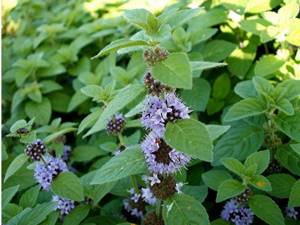
A variety of mint
The crop is also grown in specialized farms for the needs of pharmacology, perfumery, cosmetology, and the food industry. Wide range of uses at home. In order not to confuse mint with other species of the family, you need to familiarize yourself with information about the varieties and characteristics of the crop, and know what it looks like.
Popular varieties of mint
| View | Peculiarities | Description |
| Pepper | It is of hybrid origin, rarely producing nut seeds, so it is usually propagated vegetatively. More often than other species it is found in dachas. It blooms in the first half of summer with small lilac or purple flowers collected in spike-shaped inflorescences. | The plant has a knotty, creeping, branched rhizome that produces numerous shoots in the top layer of soil. The pubescent stems are green or dark purple. Opposite petiolate leaves are darker above than below. They have an oblong or ovoid shape with serrated edges and a pointed apex. The inflorescence is a spikelet up to 5 cm long, located at the top of the stem. |
| Field mint | This species is also called meadow and wild. It is found everywhere in swamps, near reservoirs, meadows and fields, populating all parts of the world. It stands out among other varieties of mint due to its bitter taste and pungent menthol smell, which can suppress appetite. | Depending on living conditions, it can reach 1 m, but there are also “dwarfs” of 15 cm each. This is due to the fact that the branched stems either stand upright or creep along the ground. The rhizome, like that of peppermint, is creeping. The leaves have an oblong epileptic shape. The flowers are lilac, sometimes with a pinkish tint, collected in spherical, false whorls. By autumn it produces a smooth fruit with 4 erems. |
| Lemon catnip | If you delve into the specifics of catnip, it becomes clear that it is not a true mint, but belongs to the same family. The plant received its name because of the great love of cats for it - mint acts on them as an aphrodisiac. Large distribution area in the wild. It is actively cultivated as a valuable raw material and honey plant. | Usually the bushes grow to 0.4-1 m and produce strong, erect stems. The plant has a branched woody root. The leaves are pubescent, ovate-triangular in shape, with a sharp tip, serrated edges and a heart-shaped base. Due to the violet-purple specks on the petals, the white flowers look dirty from a distance. The inflorescences sit at the ends of the shoots and form complex semi-umbrellas. The oval, smooth brown fruit ripens towards the end of summer. |
| Spearmint "Sonya" | This representative is popularly called flea beetle because of its ability to repel insects with its aromas. 95% of the essential oil consists of pulegone, used by perfumers, confectioners and in the canning industry. | The average height of mint ranges from 20 to 60 cm. Scattered fibrous, branched stems are formed on the bush. The leaves are small petiolate, epileptic, sometimes ovate with a wedge-shaped base. White tubes with lilac-pink petals form dense spherical ring-inflorescences. Brown, shiny, round fruits can be collected in early autumn. |
| Sweet mint | It is most often found in the Mediterranean, but can also grow in Russia in humid, sunny areas. Used in the food industry: added to canned food and drinks, as well as in the production of medicines. | The pubescent erect stems reach a height of 30 cm to 1 m. Small green leaves are framed along the edges with teeth. On some varieties of this type, the plates are decorated with white splashes. At the tops of the shoots, cone-shaped dense inflorescences are formed, collected from small white flowers that can retain their aroma until frost. If you grow on the site, you will have to constantly cut off the quickly spreading rhizomes. |
| Moroccan mint | The name itself speaks about the homeland of culture. Due to the hot climate, the leaves contain an increased amount of menthol and essential oils. It has a pleasant peppery taste and fresh aroma. This is what is added to a real mojito. | You can recognize the curly beauty by its corrugated oblong leaves of an emerald hue, framed by teeth. The straight, pubescent stems barely reach a height of 70 cm. The inflorescences collected at the end of the stem have a short stalk and are colored lilac-pink. |
| Garden mint | It is also called spearmint and is valued for its pleasant taste. To prevent the variety from being removed from the dacha plot, the ground is periodically dug up. | The stems of the plant are straight and flexible, from 0.3 to 1 m in height. The ovoid leaves are edged with teeth. Blooms with pinkish or white spikelets. Externally similar to peppermint. The difference is a more delicate sweetish aroma. |
| Longleaf mint | The stems of the plant are straight and flexible, from 0.3 to 1 m in height. The ovoid leaves are edged with teeth. Blooms with pinkish or white spikelets. Externally similar to peppermint. The difference is a more delicate sweetish aroma. | The species can rightly be called “soft and fluffy” not only because of the stem, but also the leaves covered with light felt. The grayish plates with jagged edges have a lanceolate-oblong shape. Purple or pale lilac inflorescences consist of small flowers collected in racemose whorls. The fruits ripen by early September. |
| Forest mint | In Russia, this species is known as oregano. In Europe it is called oregano. If you plant it in the country, you will have to do pruning to stop the growth. It begins to bear fruit from the second year of life. | The plant has branched roots and stems. The length of the latter ranges from 30-70 cm. The strongly elongated leaf blade has a light bottom and a dark top. The only representative of mints that produces corymbose inflorescences with small pinkish or pale purple petals. |
There are many other types of culture: chocolate, menthol, dog mint, Korean, curly, bergamot, Mexican, etc. Some have a pineapple or strawberry flavor, others have an apple or caramel flavor. This feature of mints attracts perfumers.
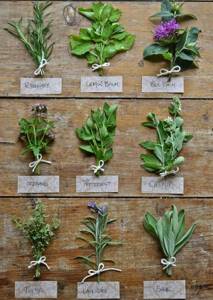
Types of mints
Note! Those who are looking for information about Ukhta mint will come across an advertisement for a beauty salon on the Internet. In other words, such a plant does not exist in nature. The same can be said about mint Dress - the link will take you to an online fashion store.
